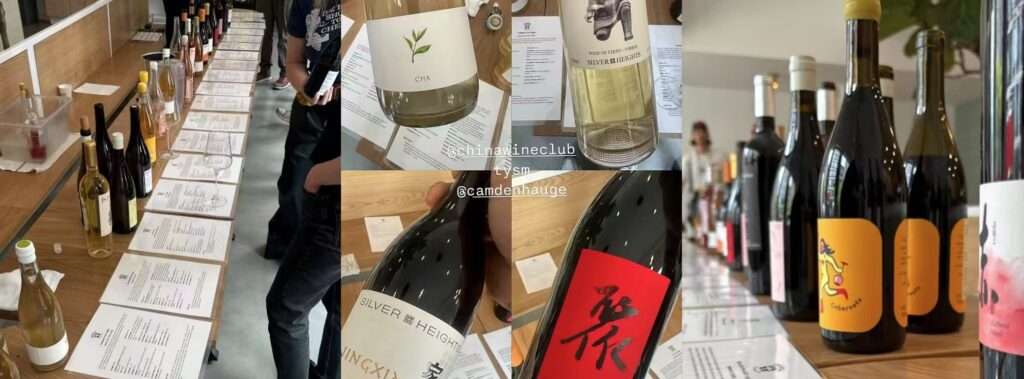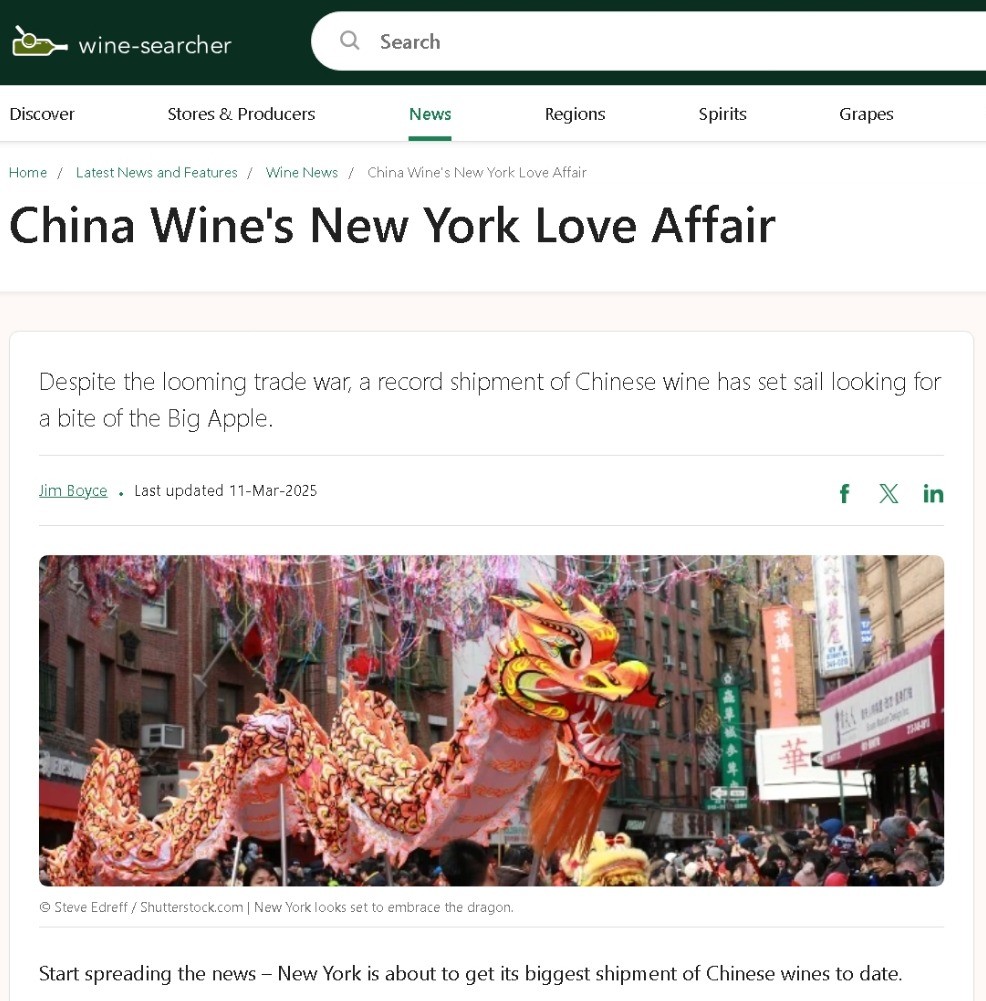
Wines from six Chinese producers are now available in New York. Last Tuesday, Camden Hauge, a Shanghai restaurant and wine scene veteran, organized the first major trade and consumer tastings of twenty wines from seven regions that she imported to the United States a few weeks ago.
The project has faced major challenges, from the logistics of gathering and preparing the wines for shipment to the current heavy tariffs, thus a strong positive response in New York was especially rewarding — Hauge said she already oversold one cuvee and received multiple orders on the spot.
The foundation of China’s fine sector is ripe oaked wines using Bordeaux varieties but those are a minority in Hauge’s portfolio. There is some Cabernet Sauvignon, but those and Hauge’s other reds tend to be low-intervention and are a minority alongside a trio of pet-nats, a range of wines made with lesser-known grapes, and a few concoctions that include tea and rice wine.

From a Wine Searcher post I wrote in March about this project:
“The lineup focuses on wineries Hauge has come to know over the years, including Silver Heights and The Cellar Project from the Ningxia region, Shofang from Hebei province and Xianghai from Xinjiang. Completing the six: FARMentation and Xiao Pu, led respectively by roaming winemakers Luo Yuchen and Ian Dai, who make wine in a half-dozen regions.
“‘Most people don’t even know what China’s geography looks like so we will showcase the differences that come from this vast land,’ [Hauge] explains. ‘Ningxia for ripeness that comes from dry, sunny days; heritage vines in Hebei; Shaanxi for orchard lushness; and the rich flavors of Xinjiang’s mountains.’
“Hauge also aims to transcend comparisons of Chinese wines to other regions and instead make aficionados realize they are discovering something new. Indeed, a look at the portfolio should entice the curious. A Muscat Hamburg using fruit from 80-year-old vines. An intriguing riff on Croatian grape Grasevina. A still Muscat with jasmine tea and a bubbly blend with rice wine. Plus powerful reds that Hauge says ‘will work well with American steakhouse dining.'”
It will be interesting to see well these and other exported China wines perform abroad as part of a larger spread of quality goods from the country, with EVs the latest success story. Especially given China has in the past faced negative press and perceptions of its food (and drink) safety record. As that classic New York song might put it, “If these wines can make it there, they can make it anywhere.”
For more on the New York project and other China wine exports, check out this story.

(Get the free Grape Wall newsletter here. Follow on LinkedIn, Instagram, Facebook and Twitter. Grape Wall has no sponsors: help support the mission, including World Marselan Day via PayPal, WeChat or Alipay. Contact Grape Wall at grapewallofchina (at) gmail.com.)

Leave a Reply
You must be logged in to post a comment.